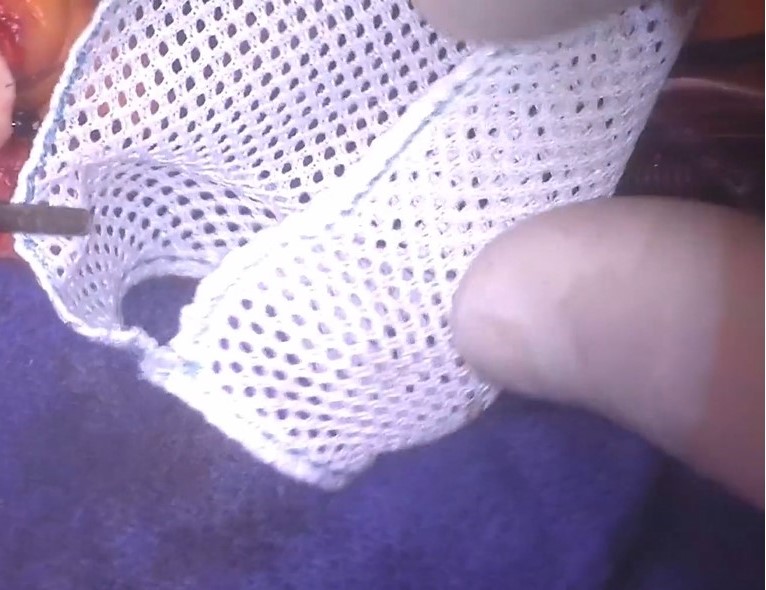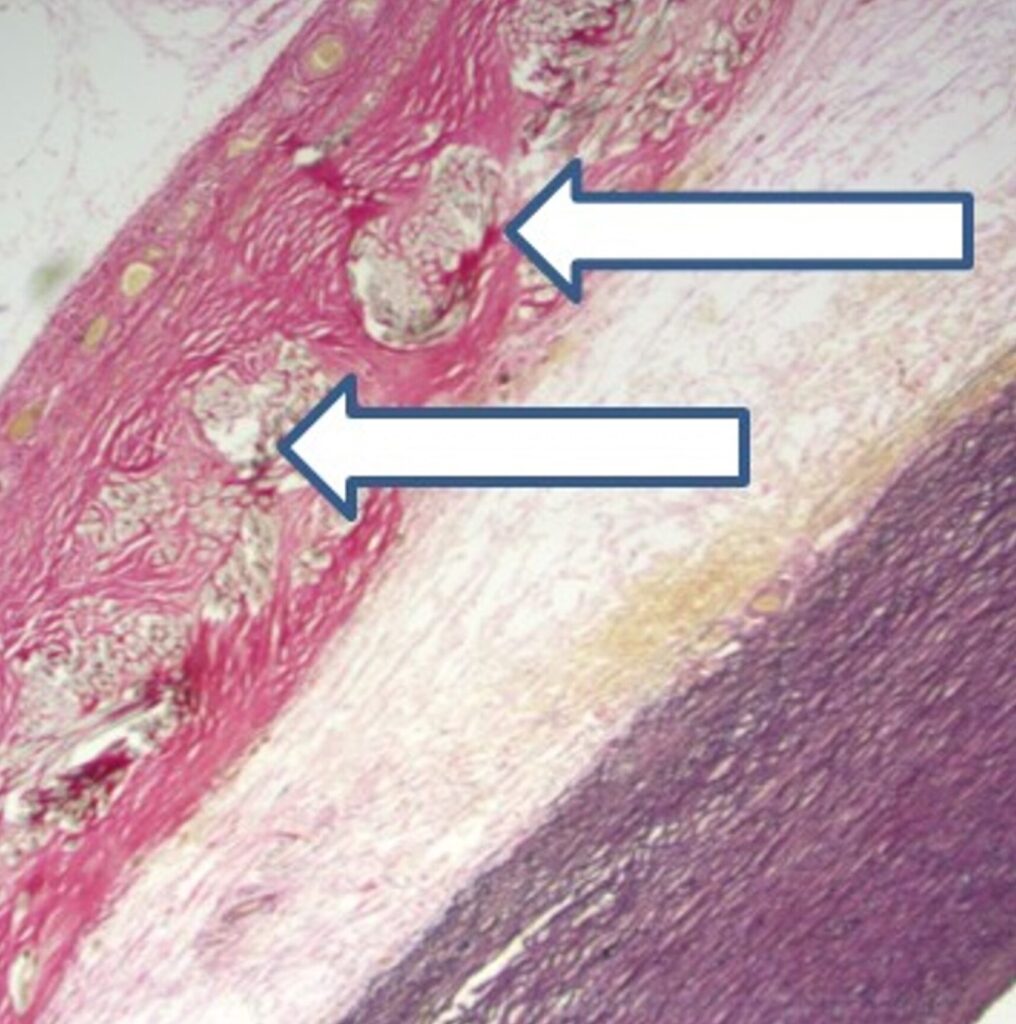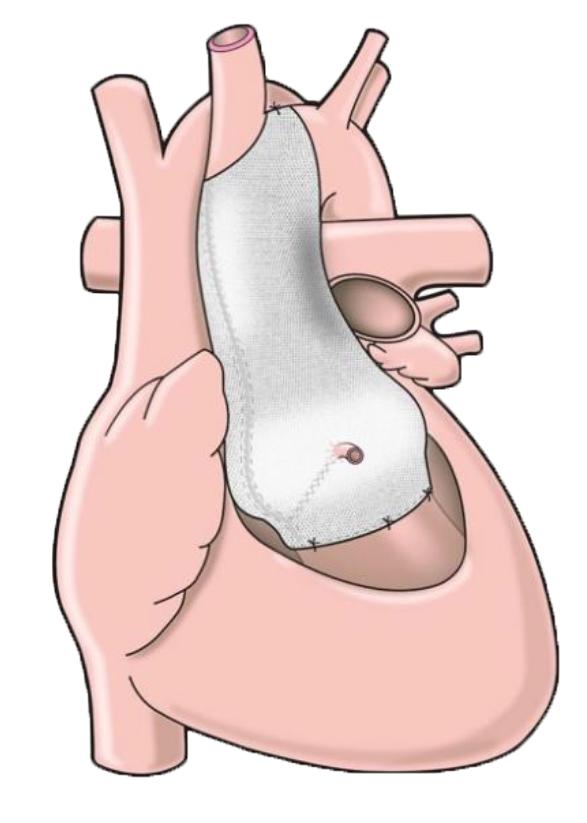In the Ross-PEARS procedure, the patient’s own healthy pulmonary valve is transplanted to replace the diseased aortic valve. The ExoVasc® PEARS supports the pulmonary autograft and can prevent dilation.
In preparation for the procedure, the patient has a CT scan. The data from the scan is used to create a 3D-printed polymeric former that exactly matches the patient’s pulmonary autograft. This former shapes the ExoVasc® PEARS implant, which is made from polyethylene terephthalate, a soft and pliable biocompatible textile.
During the operation, the ExoVasc® PEARS is removed from its former and placed around the pulmonary autograft. It is sutured (stitched) into place after the pulmonary autograft has been re-located to the aortic position.

After implantation
The ExoVasc® PEARS prevents further dilation and becomes incorporated into the aortic wall. (The arrows in the image indicate the location of the ExoVasc® PEARS four years after surgery to implant the device.)
Further surgery to manage the condition is unlikely to be necessary.
However, the ExoVasc® PEARS does not preclude further aortic intervention if it is needed in the future.

Patient benefits brochure
You may find our patient benefits brochure useful when discussing the ExoVasc® PEARS with your doctor.
Surgical centres
The Ross-PEARS procedure is offered in a number of centres in the UK, Europe and the rest of the world.




